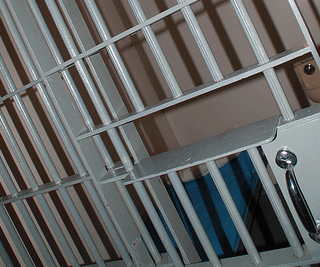
Image courtesy of Wikimedia Commons
Last week, California governor Arnold Schwarzenegger suggested that the state could save $1 billion by building prisons in Mexico to house California’s undocumented prisoners. Said the governor during the press conference:
We pay them to build the prisons down in Mexico and then we have those undocumented immigrants be down there in a prison. … And all this, it would be half the cost to build the prisons and half the cost to run the prisons.
If that idea sounds half baked, it’s because it probably was. According to the San Francisco Chronicle, the idea caught his prisons czar offguard, and a spokesman said he hadn’t a clue where the governor got the billion-dollar savings figure.
No doubt California (and the rest of the US, for that matter) could use some creative thinking about our astronomically expensive and inefficient prison system, but it’d be much more effective to consider prison reform ideas that are actually proven to work. For example: In the current issue of Mother Jones, Beth Schwartzapfel writes about a program that hooks prisoners up with green jobs—and saves taxpayers money at the same time. Through the Sustainable Prisons Project, inmates at four prisons in Washington state compost cafeteria waste, sort recycling, work on organic vegetable gardens, keep bees, and help local scientists with environmental research. (Who has time to watch moss grow? Well, prisoners.) Beats the heck out of making license plates, and all their work is paying off:
The Department of Corrections has provided Evergreen with a $300,000 grant to administer and run the newly christened Sustainable Prisons Project. It’s led to savings that Pacholke is happy to rattle off: By conserving water, Cedar Creek avoided a previously planned $1.4 million expansion of its wastewater treatment facility; by recycling and composting, another facility sent two-thirds less waste to landfills this year—garbage can cost upwards of $100 per ton to haul.
Read Mother Jones‘ in-depth coverage of America’s broken (and broke) prison system here.
















